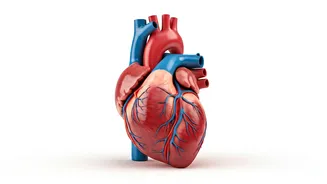Over the years, I’ve seen one truth across every healing journey—people forget how to breathe. Truly breathe. Not just to survive, but to regulate, repair, and return to balance. In my consults, I’ve met
thousands of individuals battling stress, inflammation, fatigue, and burnout. And often, the shift begins with something as simple and overlooked as the breath. Shallow breathing keeps the body in fight-or-flight. But when we breathe mindfully—slow, conscious, and consistent—we activate the body’s natural healing switch.
What if one of the most powerful tools to calm your mind and restore your health was already within you?
Lungs and oxygenation
Most people think of the lungs as passive — just there to take in air. But your lungs are one of the most intelligent healing systems in the body. With every inhale, they deliver oxygen — the life force that powers every cell. With every exhale, they release carbon dioxide — not a waste gas, but a vital molecule that regulates pH, nervous system tone, and oxygen delivery itself.
True breath isn’t just physical — it’s energetic. In yoga and Ayurveda, prana is the vital life force carried by breath. The deeper, slower, and more nasal your breathing, the more prana you generate — and the more healing you invite.
Stress to stability
Most people breathe too fast, too shallow, and through the mouth — triggering more stress, not less. A study in Frontiers in Human Neuroscience shows that mouth breathing and rapid over-breathing can increase sympathetic activity, worsening anxiety and fatigue.
We see this in our consults often: the people most overwhelmed by life are also the ones breathing in fast, shallow bursts — stuck in survival mode without even knowing it.
Conscious breathing is one of the fastest ways to calm the mind and reset the body.
-
It slows the heart rate, reduces inflammation, and improves sleep.
-
It helps regulate anxiety, panic, and emotional spirals.
-
At a cellular level, better oxygen delivery means improved energy, clarity, and immune resilience.
Stress isn’t the problem. Unprocessed, chronic stress is. Your breath is the bridge between the two — from reactivity to recovery, from chaos to calm.
Rewiring stress
When we’re stressed, the sympathetic nervous system kicks in — your heart rate speeds up, cortisol rises, digestion slows, and the body moves into survival mode. Mindful oxygenation does the opposite. It activates the parasympathetic nervous system — the rest and digest state — where healing, regeneration, and repair actually happen.
This isn’t theory. Research shows that slow, deep breathing with extended exhalations reduces anxiety, lowers blood pressure, improves heart rate variability, and even reduces inflammatory markers. It also balances CO₂ levels in the blood, improving oxygen delivery to tissues.
This is why I call breath one of the most accessible healing tools we all have — no cost, no equipment, just intention.
Healing power of nasal breathing
Mouth open, shallow chest breathing, rapid inhales — it’s how most people breathe today, especially under stress. But the body wasn’t designed for this to be the default. Nasal breathing changes everything.
It triggers nitric oxide, a natural vasodilator that opens blood vessels and improves oxygen circulation. It strengthens the heart, builds capillary density, and helps the body endure physical and emotional strain more effectively.
On the other hand, chronic mouth breathing can worsen anxiety, raise heart rate, dry out airways, and even affect jaw and facial development in children.
Simply switching from mouth to nose can rewire the body toward calm and coherence.
Techniques to try
You don’t need fancy tools or hour-long sessions to start breathing better. Just five minutes a day, done with intention, can begin to rewire your nervous system. Here are a few practices I often recommend to my clients — especially those dealing with anxiety, burnout, poor sleep, or inflammatory conditions:
Nadi Shodhana (Alternate Nostril Breathing): Close your right nostril gently with your thumb and inhale slowly through the left nostril. Then close the left nostril with your finger, release the right nostril, and exhale fully. Inhale again through the right, close it, and exhale through the left. That’s one round. Continue for 5–7 rounds. This pranayama balances both hemispheres of the brain, calms the nervous system, reduces anxiety, and brings clarity.
Box Breathing (4-4-4-4): Inhale, hold, exhale, and hold again — all for 4 counts. Simple, structured, and powerful for calming a racing mind.
4-7-8 Breathing: Inhale for 4, hold for 7, exhale slowly for 8. Ideal before bed or during high stress.
Diaphragmatic Belly Breathing: Breathe into your belly, not your chest. This slows the breath, improves oxygen exchange, and helps bring the body out of fight-or-flight.
Start small. Stay consistent. Your breath will meet you where you are.
Final word
Healing doesn’t begin with medication. It begins with awareness. And sometimes, all it takes is one conscious breath to change your state — and your story.
So ask yourself: Are you just breathingto survive… or are you breathing to live better? You don’t need expensive tools or complex rituals. Just your lungs, your awareness, and your intention.
(Luke Coutinho is an integrative lifestyle expert)















